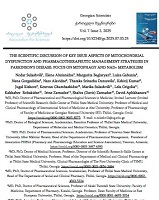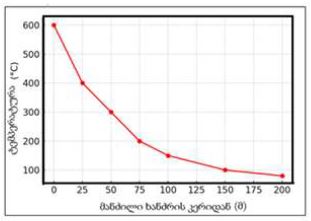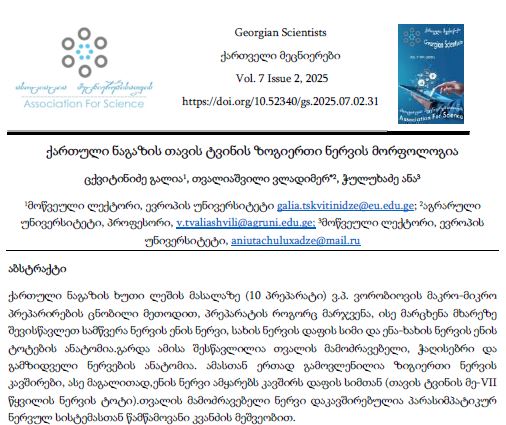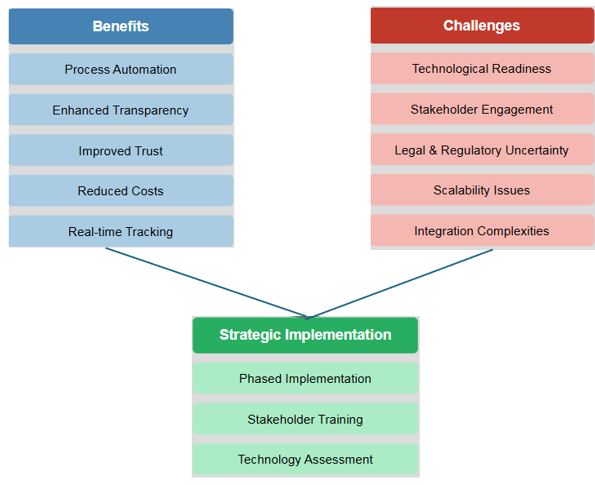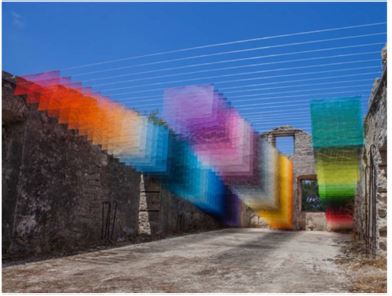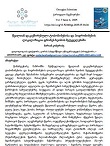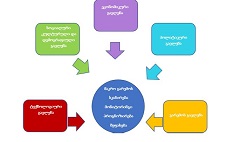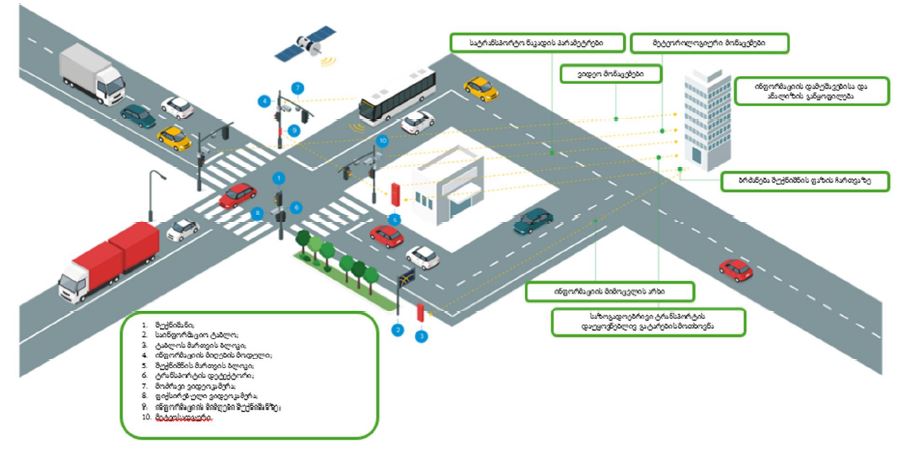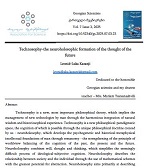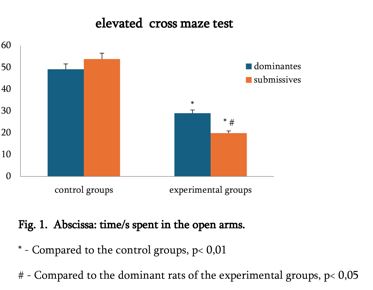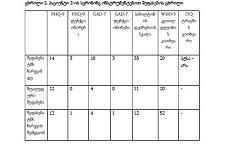„ჭკვიანი“ მასალების ტექნოლოგიური ასპექტებისათვის
ჩამოტვირთვები
სტატიაში განხილულია „ჭკვიანი მასალების“ „თვითაღდგენის“ ეფექტების მსაზღვრელი და მაინიცირებელი ფიზიკო-ქიმიური ფაქტორები, სხვადასხვა ხელოვნურად მიღებული მასალებისათვის, ისეთების როგორებიცაა: პოლიმერები, კერამიკის, ლითონის და კომპოზიციური მასალების სხვადასხვა სახეობები. მოყვანილია თვითაღდგენადი მასალების ექსპერიმენტალური პროტოტიპების მაგალითები.
Downloads
Metrics
Encyсlopedia of smart materials/[redactor Mel Schwartz]. New York: John Wiley and Sons, Inc., 2002; 1193 p.
Kessler M. Self-healing: a new paradigm in materials design // Proc. IMechE Part G: J. Aerospace Engineering. 2007. Vol. 221. P. 479-495.
Saavedra Flores E., Friswell M., Xia Y. Variable stiffness biological and bio-inspired materials // Journal of Intelligent Material Systems and Structures. 2013. Vol. 24. №5. P. 529–540.
Han B. et al. Smart concretes and structures: A review // Journal of Intelligent Material Systems and Structures. 2015. Vol. 26. №11. P. 1303–1345.
Huang H., Ye G. Self-healing of cracks in cement paste affected by additional Ca2+ ions in the healing agent // Journal of Intelligent Material Systems and Structures. 2015. Vol. 26. №3. P. 309–320.
Snoeck D. et al. Self-healing cementitious materials by the combination of microfibres and superabsorbent polymers // Journal of Intelligent Material Systems and Structures. 2014. Vol 25. №1. P. 13–24.
Shinya N., Kyono J., Laha K. Self-healing Effect of Boron Nitride Precipitation on Creep Cavitation in Austenitic Stainless Steel // Journal of Intelligent Material Systems and Structures. 2006. Vol. 17. P. 1127-1133.
Bor T. et al. Modeling of Stress Development During Thermal Damage Healing in Fiber-reinforced Composite Materials Containing Embedded Shape Memory Alloy Wires // Journal of Composite Materials. 2010. Vol. 44. № 22. P. 2547-2572.
M. Nosonovsky, P.K. Rohatgi. Biomimetics in material science. Springer, 2012. 415 p.
Olugebefola S. et al. Polymer Microvascular Network Composites // Journal of Composite Materials. 2010. Vol. 44. № 22. P. 2587-2603.
Fehrman B., Korde U. Targeted delivery of acoustic energy for self-healing // Journal of Intelligent Material Systems and Structures. 2013. Vol. 24. № 15. P. 1865-1887.
Soroushian P., Nassar R., Balachandra A. Piezo-driven self-healing by electrochemical phenomena // Journal of Intelligent Material Systems and Structures. 2013. Vol. 24(4). P. 441–453.
Atay H., Celik E. Multifunctional polymer composites: Antibacterial, flame retardant, radar absorbing and self-healing // Journal of Composite Materials. 2015. Vol. 49. № 20. P. 2469– 2482.
Williams H., Trask R., Bond I. A probabilistic approach for design and certification of self-healing advanced composite structures // Proceedings of the Institution of Mechanical Engineers Part O: J. Risk and Reliability. 2011. Vol. 225. P. 435-449.
Brancart J. et al. Atomic force microscopy–based study of self-healing coatings based on reversible polymer network systems // Journal of Intelligent Material Systems and Structures. 2014. Vol 25. №1. P. 40–46.
Phillips D., Baur J. A Granular Core for Self-healing, Variable Modulus Sandwich Composites // Journal of Composite Materials. 2010. Vol. 44. № 22. P. 2527-2545.
Haase T., Rohr I., Thoma K. Dynamic temperature measurements on a thermally activated self-healing ionomer // Journal of Intelligent Material Systems and Structures. 2014. Vol 25. № 1. P. 25–30.
Chen S. et al. Preparation of novel polytetrafluoroethylene/copper-matrix self-lubricating composite materials // Journal of Composite Materials. 2014. Vol. 48. № 13. P. 1561–1574.
Wang H. et al. Tribological performances on porous polyphenylene sulfide self-lubricating composites with super wear resistance // Journal of Thermoplastic Composite Materials. 2014. Vol 27. №1. P. 82–92.
Srikant R.R., Ramana V., Vamsi Krishna P. Development and performance evaluation of self-lubricating drill tools // Journal of Engineering Tribology. 2015. Vol. 229. № 12. P. 1479–1490.
Suiyuan C. et al. Synthesis of New Cu-based Self-lubricating Composites with Great Mechanical Properties // Journal of Composite Materials. 2011. Vol. 45. № 1. P. 51-63.
Suiyuan C. et al. Effect of BN fraction on the mechanical and tribological properties of Cu alloy/BN self-lubricating sleeves // Journal of Сomposite Materials. 2015. Vol. 49. №30. P. 3715–3725.
Singh S. et al. Microstructural analysis and tribological behavior of aluminum alloy reinforced with hybrid alumina/nano graphite particles // Journal of Engineering Tribology. 2015. Vol. 229. № 5. P. 597–608.
M. Nosonovsky, P.K. Rohatgi. Biomimetics in material science. Springer, 2012. 415 p.
Kong L. B., Cheung C. F., To S. Design, fabrication and characterization of threedimensional patterned microstructured surfaces with self-cleaning properties from hydrophilic materials // Journal of Engineering Manufacture. 2012. V. 226. №9. P. 1536– 1549.
Vorobyev A., Guo C. Multifunctional surfaces produced by femtosecond laser pulses // J. Appl. Phys. 2015. V. 117. № 3. DOI: 10.1063/1.4905616.
Scarratt L. et al. Durable Superhydrophobic Surfaces via Spontaneous Wrinkling of Teflon AF // ACS Appl. Mater. Interfaces. 2016. DOI: 10.1021/acsami.5b12165.
Ibrahim N., Refaie R., Ahmed A. Novel Approach for Attaining Cotton Fabric with MultiFunctional Properties // Journal of Industrial Textiles. 2010. Vol. 40. № 1. P. 65-83.
Sundaresan K. et al. Influence of nano titanium dioxide finish, prepared by sol-gel technique, on the ultraviolet protection, antimicrobial, and self-cleaning characteristics of cotton fabrics // Journal of Industrial Textiles. 2012. Vol. 41. № 3. P. 259-277.
Qi K., Wang X., Xin J. H. Photocatalytic self-cleaning textiles based on nanocrystalline titanium dioxide // Textile Research Journal. 2011. Vol. 81. № 1. P. 101-110.
Lee H. J., Kim J., Park C. H. Fabrication of self-cleaning textiles by TiO2-carbon nanotube treatment // Textile Research Journal. 2014. Vol 84. № 3. P. 267–278.
Ashraf M. et al. Study the multi self-cleaning characteristics of ZnO nanorods functionalized polyester fabric // Journal of Industrial Textiles. 2014. DOI: 10.1177/1528083714562086.
Ashraf M. et al. Photocatalytic solution discoloration and self-cleaning by polyester fabric functionalized with ZnO nanorods // Journal of Industrial Textiles. 2015. Vol. 44. № 6. P. 884–898.
Ranogajec J. et al. Protection of Cultural Heritage Objects with Multifunctional Advanced Materials // Progress in Cultural Heritage Preservation – EUROMED. 2012. P.255-258.
Goffredo G. B. et al. TiO2 nanocoatings for architectural heritage: Self-cleaning treatments on historical stone surfaces // Journal of Nanoengineering and Nanosystems. 2014. Vol. 228. № 1 P. 2–10.
Hadnadjev M. et al. Design of self-cleaning TiO2 coating on clay roofing tiles // Philosophical Magazine. 2010. V. 90. № 22. P. 2989-3002.
Yanılmaz M., Sarac A. S. A review: effect of conductive polymers on the conductivities of electrospun mats // Textile Research Journal. 2014. Vol. 84. № 12. P. 1325–1342.
https://worldofmaterials.ru/spravochnik/special-materials/200-provodyashie-polymeri
Ates M., Kalender O. Comparison of anticorrosion behavior of polyaniline and poly(3,4- methylenedioxyaniline) and their titanium dioxide nanocomposites //High-Performance Polymers. 2015. Vol. 27. № 6. P. 685–693.
Tiitu M. et al. Aminic epoxy resin hardeners as reactive solvents for conjugated polymers: polyaniline base/epoxy composites for anticorrosion coatings //Polymer. 2005. V. 46. P. 6855–6861.
Muthukumar N., Thilagavathi G., Kannaian T. Polyaniline-coated polyurethane foam for pressure sensor applications //High-Performance Polymers. 2015. DOI: 10.1177/0954008315583703.
Hoghoghifard S., Mokhtari H., Dehghani S. Improving the conductivity of polyaniline coated polyester textile by optimizing the synthesis conditions // Journal of industries textiles. 2015. DOI: 10.1177/1528083715594981.
Muthukumar N., Thilagavathi G., Kannaian T. Polyaniline-coated nylon lycra fabrics for strain sensor and electromagnetic interference shielding applications //High-Performance Polymers. 2015. Vol. 27. № 1. P. 105–111.
Yu J. et al. Flame retardancy and conductive properties of polyester fabrics coated with polyaniline // Textile Research Journal. 2015. DOI: 10.1177/0040517515606360.
Prasanna G.D. Synthesis and characterization of magnetic and conductive nickel ferrite– polyaniline nanocomposites // Journal of Composite Materials. 2015. Vol. 49. № 21. P. 2649–2657.
Kumar V. et al. Mechanical and electrical properties of PANI-based conductive thermosetting composites // Journal of Reinforced Plastics and Composites. 2015. Vol. 34. № 16. P. 1298–1305.
Kizildag N. et al. Polyacrylonitrile/polyaniline composite nano/microfiber webs produced by different dopants and solvents // Journal of Industrial Textiles. 2015. DOI: 10.1177/1528083715598654.
Kizildag N. et al. Polyacrylonitrile/polyaniline composite nanofiber webs with electrostatic discharge properties // Journal of Composite Materials. 2016. DOI: 10.1177/0021998316630583.
Eren O. et al. Synergistic effect of polyaniline, nanosilver, and carbon nanotube mixtures on the structure and properties of polyacrylonitrile composite nanofiber // Journal of Composite Materials. 2015. DOI: 10.1177/0021998315601891.
Al-Ghamdi A.A. et al. On the prospects of conducting polyaniline/natural rubber composites for electromagnetic shielding effectiveness applications // Journal of Thermoplastic Composite Materials. 2014. Vol. 27. № 6. P. 765–782.
Lam Y.-Z., Swingler J., McBride J. W. The Contact Resistance Force Relationship of an Intrinsically Conducting Polymer Interface // IEEE Transactions on Components and Packaging Technologies. 2006. Vol. 29. № 2. P. 294-302.
Ghaffari A., Hashemabadi S. H., Ashtiani M. A review on the simulation and modeling of magnetorheological fluids // Journal of Intelligent Material Systems and Structures. 2015. Vol. 26. № 8. P. 881–904.
Vereda F., de Vicente J., Hidalgo-Alvarez R. Effect of surface roughness on the magnetic interaction between micron-sized ferromagnetic particles: Finite element method calculations // Journal of Intelligent Material Systems and Structures. 2016. doi: 10.1177/1045389X15624793.
Spaggiari A., Dragoni E. Enhanced properties of magnetorheological fluids: Effect of pressure // Journal of Intelligent Material Systems and Structures. 2015. Vol. 26. № 14. P. 1764–1775.
Guth D., Maas J. Long-term stable magnetorheological fluid brake for application in wind turbines // Journal of Intelligent Material Systems and Structures. 2016. DOI: 10.1177/1045389X15624794.
Iglesias G. R. et al. Stability behavior of composite magnetorheological fluids by an induction method // Journal of Intelligent Material Systems and Structures. 2015. Vol. 26. № 14. P. 1836–1843.
Freyer H. et al. Scale effects of the rheological properties of electrorheological suspensions // Journal of Intelligent Material Systems and Structures. 2015. Vol. 26. № 14. P. 1856–1860.
Ma L., Zheng F., Zhao X. Sedimentation behavior of hierarchical porous TiO2 microspheres electrorheological fluids // Journal of Intelligent Material Systems and Structures. 2015. Vol. 26. № 14. P. 1936–1944.
Korobko E. V. et al. Time stability studies of the electrorheological response of dispersions with different types of charge carriers // Journal of Intelligent Material Systems and Structures. 2015. Vol. 26. № 14. P. 1782–1788.
Borin D., Stepanov G. Elastomer with magneto- and electrorheological properties // Journal of Intelligent Material Systems and Structures. 2015. Vol. 26. № 14. P. 1893–1898.
Eshaghi M., Sedaghati R., Rakheja S. Dynamic characteristics and control of magnetorheological/electrorheological sandwich structures: A state-of-the-art review // Journal of Intelligent Material Systems and Structures. 2015. doi: 10.1177/1045389X15620041.
Vacareanu L., Catargiu A.-M., Grigoras M. Spectroelectrochemical characterization of isomeric conjugated polymers containing 2,7- and 3,6-carbazole linked by vinylene and ethynylene segments //High-Performance Polymers. 2015. Vol. 27. № 4. P. 476–485.
Xu N. et al. A facile process for the preparation of polyaniline/polyacrylic acid composite electrochromism films //High-Performance Polymers. 2011. Vol. 23. № 7. P. 489-493.
Mardaljevic J., Waskett R. K., Painter B. Neutral daylight illumination with variable transmission glass: Theory and validation // Lighting Res. Technol. 2015. Vol. 0. P. 1–19. DOI: 10.1177/1477153515620339.
Wang M. et al. Binary Solvent Colloids of Thermosensitive Poly(N-isopropyl acrylamide) Microgel for Smart Windows // Industrial & Engineering Chemistry Research. 2014. V. 53. № 48. P. 18462–18472. DOI: 10.1021/ie502828b.
Nonoyama T., Gong J. P. Double-network hydrogel and its potential biomedical application: A review // Journal of Engineering in Medicine. 2015. Vol. 229. № 12. P. 853–863.
Zhang D. et al. Electroactive hybrid hydrogel: Toward a smart coating for neural electrodes // Journal of Bioactive and Compatible Polymers. 2015. Vol. 30. № 6. P. 600–616.
M. Jaiswal, V. Koul. Assessment of multicomponent hydrogel scaffolds of poly(acrylic acid2-hydroxy ethyl methacrylate)/gelatin for tissue engineering applications // Journal of Biomaterials Applications. 2013. V. 27. № 7. P. 848–861.
Cometa S. et al. Analytical characterization and antimicrobial properties of novel copper nanoparticle–loaded electro synthesized hydrogel coatings // Journal of Bioactive and Compatible Polymers. 2013. V. 28. № 5. P. 508–522. DOI: 10.1177/0883911513498960.
Kim Y. S. et al. Thermoresponsive actuation enabled by permittivity switching in an electrostatically anisotropic hydrogel // Nature Materials. 2015. V.14. P. 1002–1007. DOI: 10.1038/nmat4363.
Sobczyk M., Wallmersperger T. Modeling and simulation of the electrochemical behavior of chemically stimulated polyelectrolyte hydrogel layer composites // Journal of Intelligent Material Systems and Structures. 2015. DOI: 10.1177/1045389X15606997.
Reynolds M., Daley S. Enhancing the band gap of an active metamaterial // Journal of Vibration and Control. 2015, DOI: 10.1177/1077546315600330.
P. F. Pai. Metamaterial-based Broadband Elastic Wave Absorber // Journal of Intelligent Material Systems and Structures. 2010. Vol. 21. P. 517-528.
Restrepo-Flórez J. M., Maldovan M. Mass Separation by Metamaterials // Scientific Reports. 2016. V. 6. DOI: 10.1038/srep21971.
Weis J., Swager T. Thiophene-Fused Tropones as Chemical Warfare Agent-Responsive Building Blocks // ACS Macro Lett. 2015. V. 4. №1. P. 138–142.
Ackerman E. 4-D Printing Turns Carbon Fiber, Wood Into Shapeshifting Programmable Materials // IEEE Spectrum. 2014. URL: http://spectrum.ieee.org/techtalk/computing/hardware/4d-printing-turns-carbon-fiber-wood-into-shapeshiftingprogrammable-materials.
Correa D. et al. 3D-Printed Wood: Programming Hygroscopic Material Transformations // 3D Printing and Additive Manufacturing. 2015. Vol. 2. № 3. P. 106-116. DOI: 10.1089/3dp.2015.0022.

ეს ნამუშევარი ლიცენზირებულია Creative Commons Attribution-NonCommercial-NoDerivatives 4.0 საერთაშორისო ლიცენზიით .























